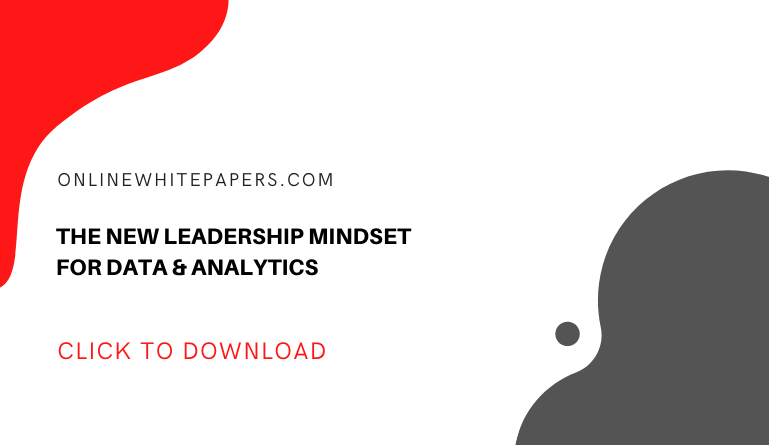Companies are hiring a growing number of data scientists, as well as analysts and artificial intelligence specialists, but there is little consensus as to which qualifications are needed for the jobs.
Data scientists might focus heavily on statistics, open-source coding, or solving business problems based on data. There was never a realistic chance of finding a data scientist unicorn with all these skills at the highest level.
As the position has grown in popularity and demand, more and more professionals have begun using it to describe their roles. As a result, colleges and universities have created hundreds of new programs in data science and analytics to meet the demand.
But these programs differ widely in the skills they teach, and some universities offer multiple programs with different emphases. Titles such as data scientist and quantitative analyst are unlikely to accurately portray an employee’s capabilities, whether they are newly hired or experienced.
Initiatives are underway to standardize the different types of roles and requisite skills for data and analytics across organizations, but they are still in the early stages. These initiatives are a good idea, but the process of developing new standards can take years.
In the meantime, employers should concentrate on classifying and certifying the various types of analytical work they have and require.
The data teams would also benefit from expanding their talent pool through partnerships with universities and building and nurturing communities within the organization to develop employees. Businesses looking to improve operations and achieve digital innovation should follow these steps.
Data-Analytics Skills
Data scientists are required to have a variety of skills depending on the type of data they are analyzing as well as the scope and scale of their analytical work. Analytical experts must nevertheless possess a variety of skills to succeed. The majority of their time is spent cleaning and aggregating data, according to data scientists.
As a result, organizations often have to collect unstructured data from a variety of sources. Most modern databases and data analytics tools only support structured data, which makes the task of making sense of such data challenging.
Furthermore, data scientists spend 19 percent of their time gathering data sets from various sources. It is common practice for tech-savvy companies to collect data related to industry-specific metrics to update their market intelligence and benchmark their performance against peers.
In the era of big data, organizations can easily find credible information from government agencies such as the US Bureau of Labor Statistics, web-based data platforms, and market research firms.
How to Put Your Data Analysis to Good Use
It is not necessary for most companies to have an army of data scientists or to use cutting-edge analytical techniques. The most important thing is to develop analyses that solve key commercial and operational issues.
Fortunately, there are inexpensive and readily available tools to help. Processing power is no different. Meanwhile, firms are collecting commercially relevant data at a faster rate than ever before, and already store vast amounts of it (but don’t analyze it).
Most often, companies lack a clear strategy and operational model for using these capabilities in a way that fits their individual business needs. There are three components to any such effort:
Persons who are proficient in combining their business expertise with advanced analytics methods and applications
Transforming analytical expertise and an understanding of the business problem into actionable insights based on evidence
The organization should assemble a small team of analytics professionals (not necessarily data scientists) to develop and deploy appropriate analytical tools and techniques, with internal training and assistance.
As a result, these two factors enable businesses to close the gap between technical skills and commercial thinking.
The Roles of a Data Analytics Team
-
Data Engineer
Compiling, storing, and analyzing data on a large scale is one of the main duties of a Data Engineer. Data scientists collect raw data through various programs and turn it into data that can be used for analysis by data scientists.
Data engineers are essential to the process. You cannot transform the collected data into useful information for the rest of the team without them.
-
Data Scientist
Data Scientists are responsible for making viable predictions by utilizing advanced mathematics and statistics. Using the data scientist’s work, company executives can make actionable plans.
These predictions may be geared toward ways to increase sales, retain your current customer base, and acquire new ones.
-
Data Analyst
The role of this specialist is crucial. The findings are translated into a language that non-technical teams can understand. The report combines what the scientist finds with their interpretation. By cleaning and interpreting the data, the Data Analyst will be able to answer questions and solve problems.
-
Business Analyst
Business Analysts go further than that. Together, the data and their acumen help them bridge the gap between the IT specialists and the owners and executives on the business team. Analysts can assist in interpreting anything that is not easily understood and understand the terminology.
Through their insight, they can offer input on how the organization can plan for the next step and any direction changes the organization may need to make.
3 Considerations when Building the Perfect Data Analytics Team
-
How big should my data team be?
Several factors must be considered when determining the size of the data team. The larger the company, the more data they will need to master; the bigger the team, the more data-driven the company.
Consider the following questions:
- What amount of data is being generated?
- Will the team work on multiple projects at once?
- What is the purpose of the data team?
- Who will they report to?
-
Will the team be centralized?
Some models have centralized data teams. An organization is served by a single team. Other models do not have centralized data teams. Individual departments own their processes, employees, and resources. Other departments use a combination of both.
There is no ideal structure; each organization needs its own according to its data dependency. The fact remains that it is an important consideration; it can have a significant impact on data governance processes.
-
Do you have a data strategy for the organization?
To determine how data-dependent the organization will be, a roadmap is needed. The data infrastructure needs to be significant, for example, if every business activity is driven by data.
A significant analysis requires processes, tools, and professionals. For instance, if significant business decisions are to be backed by data, but smaller, less important decisions without analysis are to be made every day, you may not need such an extensive team.
Final Thoughts
Data analytics talent is in short supply at all levels in businesses. Both entry-level and senior positions are difficult to fill. Offshoring is not a solution to this problem, as emerging economies lack qualified workers.
Employers will need different strategies for hiring and retaining the best analytics leaders. Those who do this right will have an edge over their competitors.





